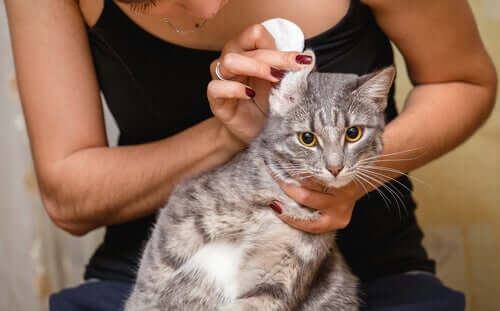How to Clean Your Cat's Ears (and Survive)

Felines are clean creatures by nature. However, there are certain areas they can’t easily reach, such as their ears. Learn how to clean your cat’s ears in order to help them complete their grooming routine.
The importance of knowing how to clean your cat’s ears
The anatomy of a cat’s ear makes it impossible for stuck particles to be easily expelled out of the ear canal without our help. Without our assistance, the foreign element would, most likely, become trapped and cause ear infections.
Unfortunately, if left untreated, these could be of consequence in the life of our feline friend.
In order to do this, you should use a product specifically designed for feline ears – one that doesn’t irritate the ear canal and make it worse. In fact, there are some ear cleaners that contain antibacterial agents and fungus repellents that can prevent future infections. Even the typical ear wax removal products can be used to prevent the possible appearance of other diseases.

Step by step
Cleaning your cat’s ears is not as complicated as it may seem. With this guide you can help eliminate infections and foreign particles in a very short time:
- Sit comfortably and place the cat on your lap. In order to avoid scratches, you should wrap the animal in a towel, it’ll immobilize them.
- Put a few drops of the ear cleaner inside the cat’s ears while they’re erect. Once they’re inside the duct, the solution will continue to go in until each ear is completely full.
- Don’t insert the tip of the container into the cat’s ear since it must remain sterile.
- Massage the area so that the product can dissolve any foreign element lodged inside the auditory canal. Just leaving one could be the one that leads to otitis.
- Clean the excess product and any foreign element left in the duct with a small piece of cotton. Don’t use a cotton swab as it could puncture and damage the ear canal.
- Finally, reward the animal for their patience and release them. (Make sure you’ve covered both ears before you do.)
In the event of an infection already present and if your veterinarian has already prescribed a product, then apply it directly to the ear in any way they might have explained. Don’t self-medicate, there are many types out there so consult a professional before using any of them.